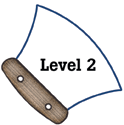
Alaska Science
Key Element C4
A student who meets the content standard should understand some personal and societal beliefs accept non-scientific methods for validating knowledge.
 |
Alaska Science A student who meets the content standard should understand some personal and societal beliefs accept non-scientific methods for validating knowledge. |
|
Performance Standard Level 2, Ages 8–10
|
|
|
|
Sample Assessment Ideas
|
Standards Cross-References
|
||
|
National Science Education Standards People have always had questions about their world. Science is one way of answering questions and explaining the natural world. (Page 138) Recognize and analyze alternative explanations and predictions. Students should develop the ability to listen to and respect the explanations proposed by other students. They should remain open to and acknowledge different ideas and explanations, be able to accept the skepticism of others, and consider alternative explanations. (Page 148) Science cannot answer all questions and technology cannot solve all human problems or meet all human needs. Students should understand the difference between scientific and other questions. They should appreciate what science and technology can reasonably contribute to society and what they cannot. For example, new technologies often will decrease some risks and increase others. (Page 169) Scientists formulate and test their explanations of nature using observation, experiments, and theoretical and mathematical models. Although all scientific ideas are tentative and subject to change and improvement in principle, for most major ideas in science, there is much experimental and observational confirmation. Those ideas are not likely to change greatly in the future. Scientists do and have changed their ideas about nature when they encounter new experimental evidence that does not match their existing explanations. (Page 171) Tracing the history of science can show how difficult it was for scientific innovators to break through the accepted ideas of their time to reach the conclusions that we currently take for granted. (Page 171) |
Benchmarks Seek better reasons for believing something than “Everybody knows that” or “I just know” and discount such reasons when given by others. (Page 299) |
|
Table of Contents | Return to Alaska Native Knowledge Network